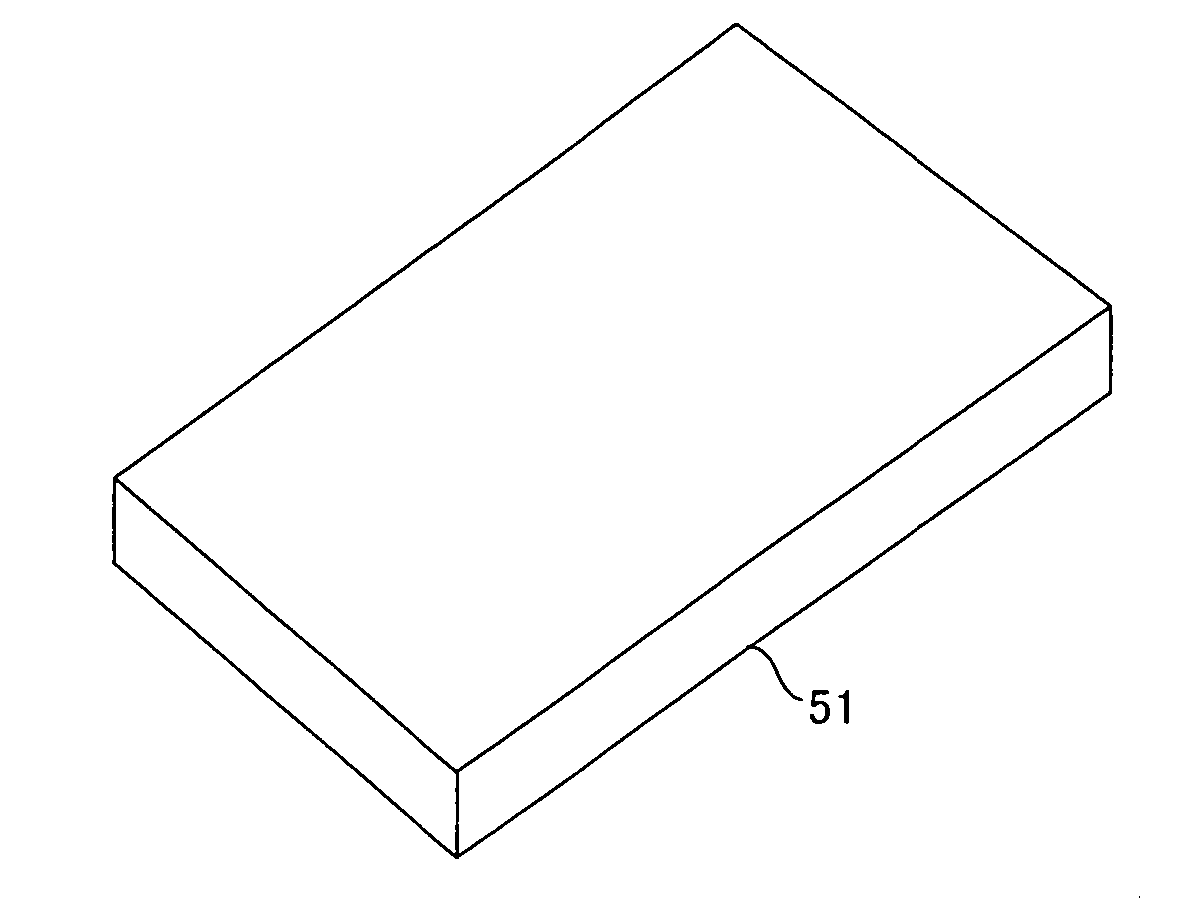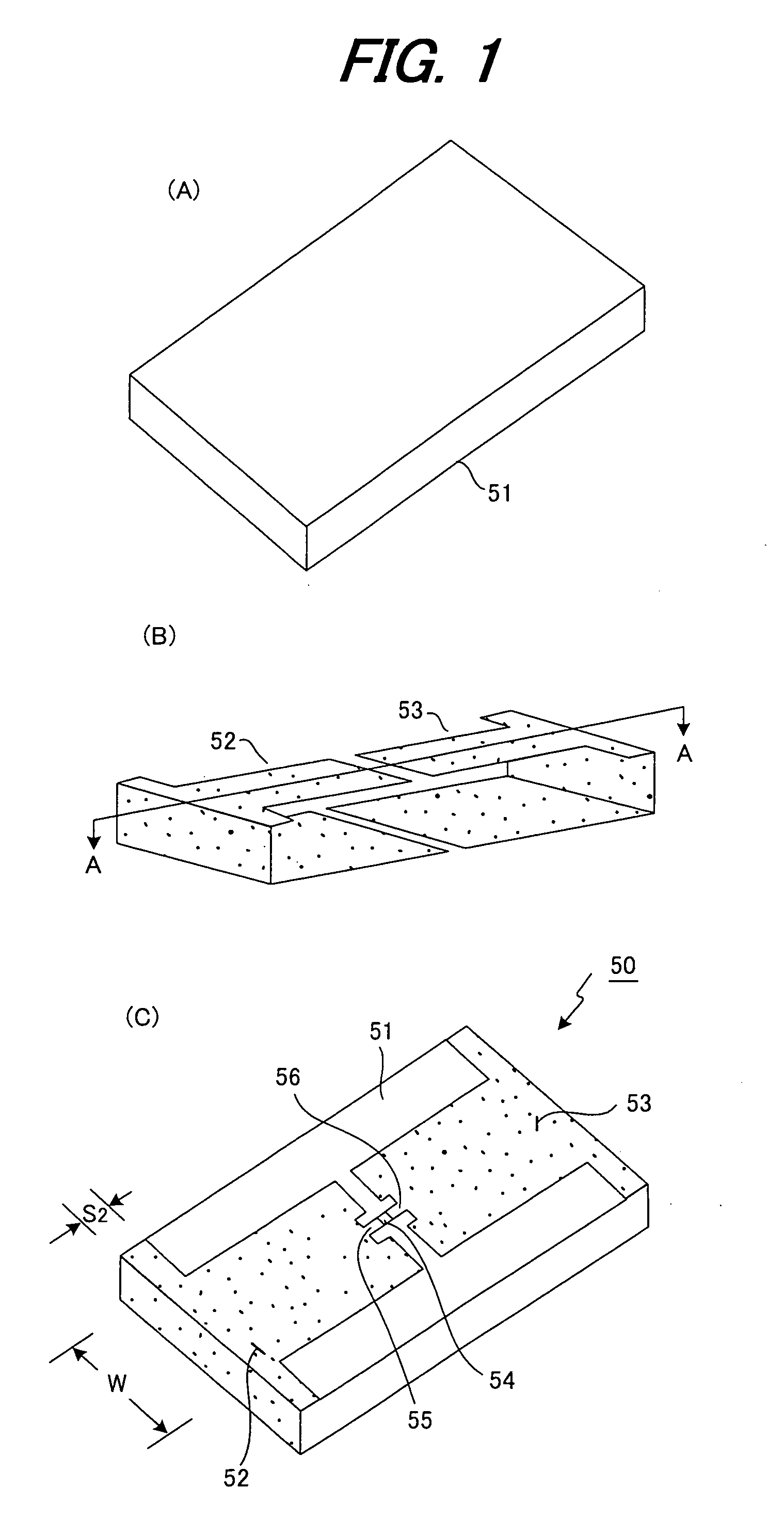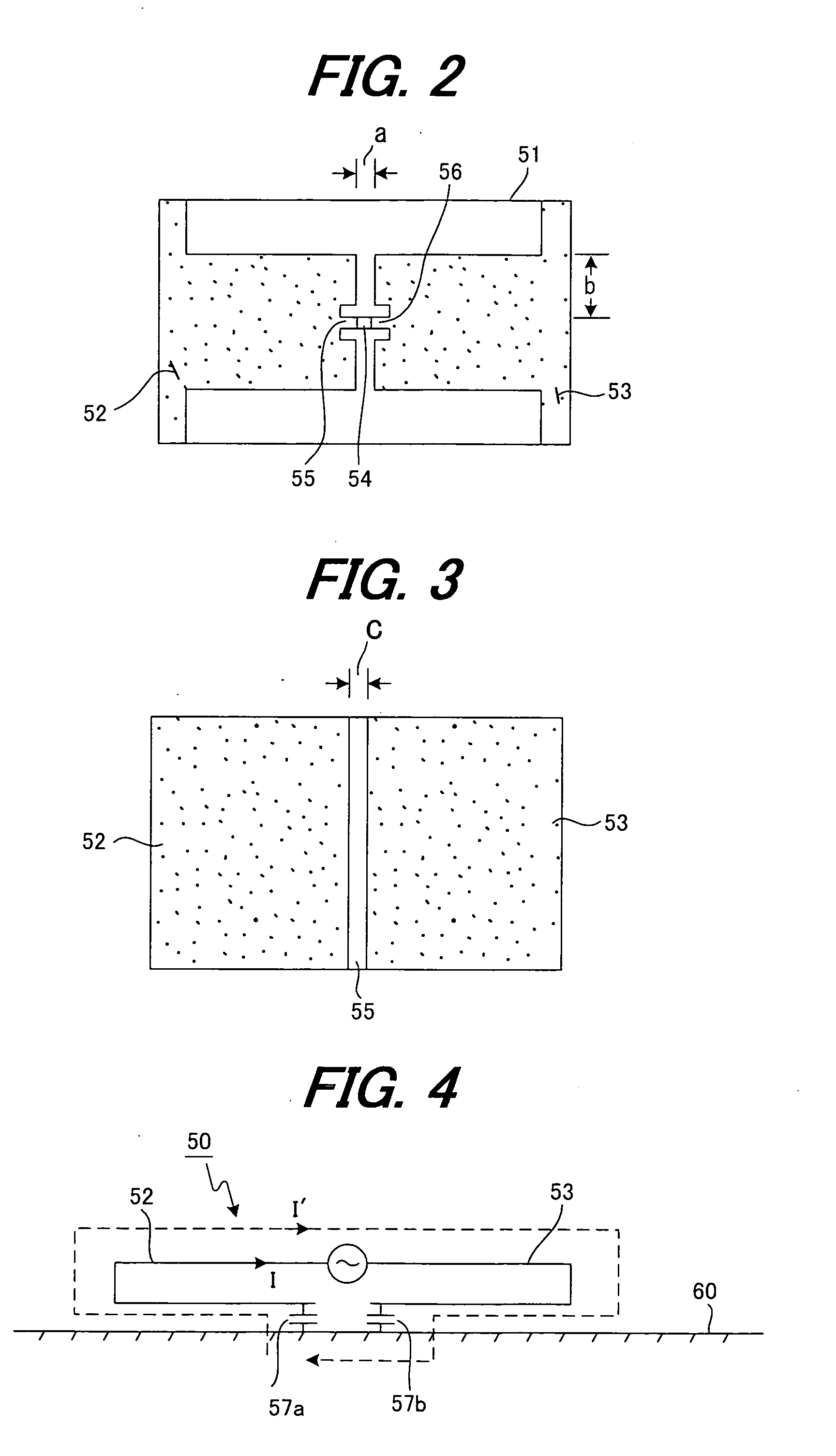RFID tag and manufacturing method thereof
a technology of rfid tags and manufacturing methods, which is applied in the direction of loop antennas with ferromagnetic cores, burglar alarm mechanical actuation, instruments, etc., can solve the problems of metal impairing the communication waves of rfid tags, troublesome reading of barcodes, and inability to add new information or update information to barcodes. , to achieve the effect of widening the bandwidth, widening the bandwidth, and high precision
- Summary
- Abstract
- Description
- Claims
- Application Information
AI Technical Summary
Benefits of technology
Problems solved by technology
Method used
Image
Examples
first embodiment
(A) First Embodiment
Construction
[0054]FIG. 1 is a perspective drawing of details of a RFID tag 50 having the loop antenna construction of this invention. As shown in (A)-(C) of FIG. 1, first and second loop antenna sections 52, 53 having a U-shaped cross section AA are attached to a 78×45×1.2 mm flat plate-shaped dielectric member (dielectric board) 51. Also, a LSI chip 54 is mounted on chip-mounting pads 55, 56 so that it fits in a concave section (not shown in the figure) formed in the dielectric board 51 and so that it is connected to the antenna sections 52, 53. The chip-mounting pads 55, 56 are located on the end sections of the loop antenna sections 52, 53.
[0055] The dielectric board 51, for example has electrical characteristics of a dielectric constant εr=4.3 and dielectric loss factor tan δ=0.009, and can be formed using just inexpensive resin that does not contain glass or the like. For example, this dielectric board 51 can be formed using a resin having good formabilit...
second embodiment
(B) Second Embodiment
[0081] The RFID tag of the first embodiment is attached to a conductive body by way of an insulating layer and used, so an equivalent circuit as shown in FIG. 4 is formed and the required characteristics are obtained. However, in the case of attaching the RFID tag to a non-conductive body, current does not flow through the antenna pattern, so it does not function as a tag antenna.
[0082]FIG. 15 is a drawing explaining the RFID tag having the loop antenna construction of a second embodiment of the invention in which current can flow through the antenna pattern when the RFID tag is attached to a non-conductive body, where (A) of FIG. 15 is an perspective view of details of the RFID tag, and (B) of FIG. 15 is a perspective view of the RFID tag.
[0083] The RFID tag of this second embodiment is constructed with a 100 μm insulating sheet 81 and conductive sheet 82 layered on the bottom surface of the RFID tag 50 (see (C) of FIG. 1) of the first embodiment. By using th...
PUM
 Login to View More
Login to View More Abstract
Description
Claims
Application Information
 Login to View More
Login to View More - R&D
- Intellectual Property
- Life Sciences
- Materials
- Tech Scout
- Unparalleled Data Quality
- Higher Quality Content
- 60% Fewer Hallucinations
Browse by: Latest US Patents, China's latest patents, Technical Efficacy Thesaurus, Application Domain, Technology Topic, Popular Technical Reports.
© 2025 PatSnap. All rights reserved.Legal|Privacy policy|Modern Slavery Act Transparency Statement|Sitemap|About US| Contact US: help@patsnap.com



